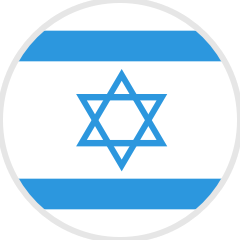14 Different Ways (Informal and Formal) To Say Please and Thank You in Dutch
Ready to go Dutch once more? This time, we’re bringing you different ways to say please and thank you in Dutch!
Showing gratitude, the Dutch way
Hallo, allemaal! (Hello, everyone!) Want to know how to say please and thank you in Dutch? Of course you do! These are two of the most basic and useful phrases any Dutch language learner should know before their trip to Amsterdam.
Everyone, including the Dutch, appreciate a please and thank you. It’s just polite! And, like most other languages, there are formal and informal ways to say please and thank you in Dutch.
In Dutch, the distinction is made by how you address people – either using je [jə] or u [y]. The former is used with friends, family, and acquaintances; the second is used with people like your boss or an elderly person.
And although the Dutch will use je indiscriminately at times, it’s best to differentiate the formal and informal ways to say please and thank you.
With that out of the way, let’s show you how to say please and thank you in Dutch! Don’t forget that you can learn Dutch or any of the other 10 languages we offer by downloading the Fluent Forever app!
(Hint: Interested in learning more handy Dutch phrases? Check out our article on how to say hello and goodbye in Dutch in 20 different ways.)
Informal ways to say thank you in Dutch
You can use the following phrases to show gratitude in informal settings among friends, family, and acquaintances.
1) Dank je wel / Dankjewel [ˌdɑŋk jə ˈʋɛl]
This is hands down the most popular way to say thank you in Dutch. You’ll hear dank je wel used all over The Netherlands, and you’ll see it spelled in two ways: dankjewel and dank je wel. Both are correct and pronounced the same way.
Feeling extra casual? Drop the wel and use dank je by itself.
These next four ways to say thank you in Dutch are handy when you want to give your gratitude a little extra something.
2) Super bedankt [ˈsy.pər bəˈdɑŋkt]
What’s that in the sky? Is it a plane? Is it a bird? No, it’s super bedankt!
The Dutch tend to use English words in their everyday language, including the word “super.” Super bedankt literally means “super thank you.”
3) Ontzettend bedankt [ɑntzɛtɛnd bəˈdɑŋkt]
Ontzettend means “enormous,” so ontzettend bedankt means “enormous thank you” in Dutch.
4) Heel erg bedankt [ɦeːl ɛrx bəˈdɑŋkt]
How do you say “thank you very much” in Dutch? Well, it’s heel erg bedankt, of course! Use this when you want to show great gratitude for something your friend did for you.
5) Hartstikke bedankt [ˈɦɑrtˌstɪ.kə bəˈdɑŋkt]
Literally meaning “heartfelt thank you,” hartstikke bedankt is an emotional way to say thank you in Dutch, straight from the bottom of your heart.
6) Alvast bedankt [ɑlˈvɑst bəˈdɑŋkt]
Writing an email to a colleague at work? Thank them in advance for that updated Excel Sheet by saying alvast bedankt, or “thanks in advance.”
How to say thank you in Dutch in ways that work for formal and informal settings
These next phrases apply for both formal and informal settings, although we recommend you to stick with 10, 12, 13, and 14 for formal situations (more on that below).
7) Bedankt [bəˈdɑŋkt]
Bedankt is short, sweet, and straightforward – kind of like the Dutch. You’ll recognize it from the phrases above. It means “thanks” in Dutch.
8) Dank jullie wel [dæŋk ˈjʏli ʋɛl]
Walking into a surprise party for your birthday? Thank everyone in the room by saying dank jullie wel, which means “thank you all.”
9) Saying “thank you for…” in Dutch
Say you’re in one of Amsterdam’s famous cafes and someone buys you a coffee. If you want to thank your friend specifically for that coffee, all you need to do is say any thank you phrase in this list and add voor de koffie [voːr də ˈkɔ.fi].
In other words, if you want to thank someone for a specific thing, use the word voor, meaning for, between the “thank you” and the thing. Let’s look at some examples:
- Bedankt voor de appel. [bəˈdɑŋkt voːr də ˈɑpəl] (Thanks for the apple.)
- Dankje voor je help. [ˈdɑŋk.jə voːr jə ˈɦɛlp] (Thank you for the help.)
- Dank jullie wel voor het feest. [dɑŋk ˈjʏli ʋɛl voːr ɦ)ət feːst] (Thank you all for the party.)
A note on saying thank you in Dutch
Saying dank je wel by itself, or using other phrases in this list in that way, might be construed as politely refusing something. To avoid this, you can say ja [jaː], or yes in Dutch, before saying thank you.
– Wil je een koffie? [ʋɪl jə ˈkɔ.fi] (Would you like a coffee?)
– Ja, dank je wel. [jaː dɑŋk jə ʋɛl] (Yes, thank you).
OK, now for the formal ways of saying thank you in Dutch!
Formal ways of saying thank you in Dutch
10) Dank u wel [dæŋk u ˈʋɛl]
Dank u wel means “thank you” in Dutch, just like dank je wel does. However, as we mentioned before, the Dutch use u to address people in formal situations. You can use dank u wel when thanking your boss, an elderly person, or an authority figure.
11) Dank u zeer [dæŋk u zeːr]
Dank u zeer means “thanks a lot.” It’s important to mention that zeer can signify “hurt” or “a lot,” and it means the latter in this case.
12) Hartelijk bedankt [ˈɦɑrtələk bəˈdɑŋkt]
You’ll hear this phrase when a public servant is done with a speech and wants to thank their audience. Hartelijk bedankt means, literally, “heartfelt thanks.”
13) Bij voorbaat dank [bɛi̯ ˈvoːr.baːt dæŋk]
Remember that hypothetical email you sent to a colleague? Well, imagine it’s your boss and you’re asking for time off. Thank your boss in advance by saying bij voorbaat dank, which is the formal alternative to alvast bedankt.
How to say please in Dutch
Alright! You’re all set with how to say thank you in Dutch! Let’s now focus on how to say please in Dutch.
14) Alsjeblieft [ˌɑlʃəˈblift]
Learning how to say please in Dutch is easy, because there’s only one way to say it: alsjeblieft. And even though it’s just one word, it’s rather versatile.
Alsjeblieft can be used at the end of a sentence when you ask for something, or it can be used when responding to someone who thanked you. In other words, alsjeblieft can mean “please” or “you’re welcome.” Let’s look at an example:
– Mag ik een biertje, alsjeblieft? [mɑx ɪk ən birtjə ˌɑlʃəˈblift] (May I have a beer, please?) – Ja. [jaː] (Yes.)
– Bedankt! [bəˈdɑŋkt] (Thanks!)
– Alsjeblieft. [ˌɑlʃəˈblift] (You’re welcome.)
There is a formal way to say please in Dutch, and it’s alstublieft [ˌɑlstyˈblift]. It’s used in the same way as its informal cousin, but the pronunciation does change.
Stoked about having discovered so many useful Dutch phrases? Don’t stop now! Keep learning Dutch by downloading the Fluent Forever app, and boost your progress with our Live Coaching.


















